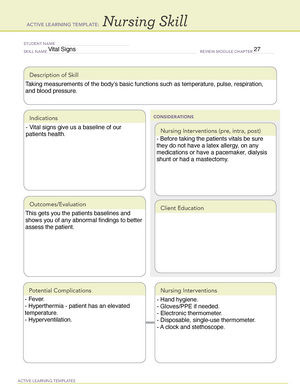

Ontario Agency for Health Protection and Promotion: Routine practices and additional precautions. This excellent resource provides routine practice and additional precautions in all health care settings. These documents may be used to support your own documentation practice and best practices.Ħ. and international resources are also provided. This website offers the latest reports, guidelines, standards, and policies related to infection control issues. Centers for Disease Control and Prevention: Guidelines for disinfection and sterilization in healthcare facilities. The goal of this document is to reduce the rates of health care associated infections. Each recommendation listed is categorized according to scientific evidence, theoretical rationale, and applicability.ĥ.

This resource covers common viruses/bacteria found in the health care setting, such as: Centers for Disease Control and Prevention: Antibiotic/antimicrobial resistance.
#Ati skills module surgical asepsis manual#
This manual offers guidelines for working in the community and residential care.ģ. British Columbia: Home and community care – Policy manual.
#Ati skills module surgical asepsis skin#
BC Centre for Disease Control: Blood and body fluid exposure management. This resource outlines risk assessment and guidelines for potential exposures of percutaneous, permucosal, and non-intact skin to HIV, hepatitis B, and hepatitis C.Ģ. Practise strict adherence to the principles of sterile technique to prevent and minimize infections during sterile and invasive procedures.ġ.Be aware how the chain of infection works and implement ways to break the chain of infection in practice.Susceptible patients include very young children patients who are elderly, nutritionally deficient, or chronically ill patients undergoing medical treatments such as chemotherapy or taking medications such as high doses of steroids and individuals who are already ill or have open wounds (Perry et al., 2014). Be aware of potential risk factors of patients that make them more susceptible to infections.It is vital to implement preventive measures at all times during patient care or during procedures related to these areas. The most common sites for HAIs are the urinary tract and the respiratory tract.



 0 kommentar(er)
0 kommentar(er)
